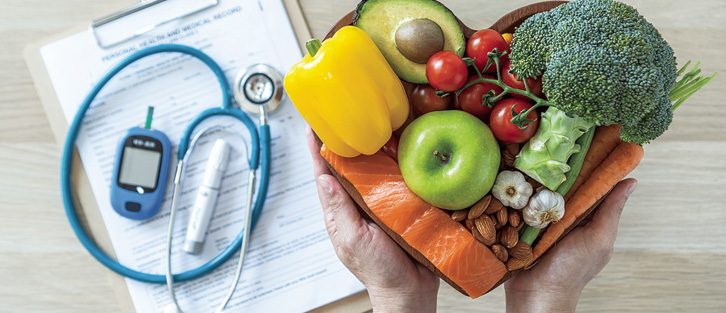More than 1-in-10 Americans have diabetes, and 1-in-3 adults in the U.S. have metabolic syndrome. While these conditions are common and related to each other, they’re not always well understood. Let’s break it down to the basics.
Blood Sugar
As your body digests food, the carbohydrates you consume get converted into a type of fuel referred to as either blood glucose or blood sugar. Cells can only use this fuel when it’s brought inside them by a hormone called insulin. If there’s not enough insulin, or if the cells don’t respond to the insulin, the blood sugar builds up in the blood, damaging blood vessels. If blood sugar levels are high enough, this becomes diabetes.
Prediabetes
Before someone develops Type 2 diabetes, they almost always go through a time when they have prediabetes.
Gestational Diabetes
This is a form of diabetes that occurs during pregnancy, and about 1-in-10 pregnancies are affected. It can be caused by pregnancy hormones making the mother’s body resistant to insulin or if the mother’s body isn’t able to make/use the insulin it needs.
Type 1 Diabetes
In this type of diabetes, the body doesn’t produce insulin. This type of diabetes can strike at any age, and unfortunately, there’s nothing proactive that can be done to prevent it.
Type 2 Diabetes
The most common form of diabetes, about 37 million people in the U.S. have this type, but 1-in-5 don’t realize it. Being undiagnosed or untreated puts someone at a greater risk of developing complications. Common indicators are:
- Increased hunger, thirst, fatigue, urination, or infections
- Very dry skin
- Tingling in hands or feet
If have any of these symptoms, or if you…
- Are overweight
- Are 45 years or older
- Have a sibling or parent with diabetes
- Are sedentary
- Have had gestational diabetes
…it’s a good idea to get screened for diabetes. Your primary care provider can do that with a simple blood test. Diabetes is dangerous because it increases a person’s risk of developing heart disease, stroke, kidney disease, vision problems, erectile dysfunction, nerve issues, and wounds that won’t heal.
Metabolic Syndrome
Diabetes isn’t the only troublemaker characterized by high blood sugar levels. “Metabolic Syndrome” is a group of conditions that includes high blood sugar and other risky conditions. If these conditions aren’t addressed, the person that has them risks developing full-blown diabetes, heart disease, or having a stroke. Up to one-thirds of U.S. adults have Metabolic Syndrome.
Watch out for:
- High blood glucose (sugar)
- High blood pressure
- High triglycerides
- Low “good” cholesterol (HDL)
A waistline of 40 inches or more for men and 35 inches or more for women. Carrying adipose tissue (fat) around the waist is often the only visible sign of metabolic syndrome.
Why would it matter where body fat is deposited?
Adipose tissue, or body fat, is found under the skin (subcutaneous fat) or in the abdomen around the internal organs (visceral fat). Fat cells (especially visceral fat) pump out substances that can increase the risk of cardiovascular disease, decrease other cell’s sensitivity to insulin, increase blood pressure, harm blood clotting, and increase bad cholesterol while decreasing good cholesterol. More visceral fat equals more of what causes metabolic trouble in your body.
Is there a way to prevent or reverse prediabetes and metabolic syndrome? Yes! Because they are related, what works for one will work for another. The bonus—these changes also protect you from Non-Alcoholic Fatty Liver Disease, Alzheimer’s, and a host of other conditions you don’t want to have to deal with.
- Eat and drink like someone that already has diabetes to put the brakes on actually developing diabetes. Visit diabetes.org to learn how.
- Move more! Exercise increases fitness levels, preserves muscle mass, and improves sleep and blood glucose control. Even light physical activity wakes your cells up and helps them to use insulin more effectively.
- Manage stress and get enough sleep. This can help balance the hormones that increase both blood sugar and hunger.
This is a condensed version of the Sawtooth Mountain Clinic’s “Topic of the Month” newsletter. Check out the full article on our website (sawtoothmountainclinic.org) and learn about the different types of diabetes, less common signs of diabetes, the specific markers for Metabolic Syndrome, and how “Non-Exercise Activity Thermogenesis” can impact health.





